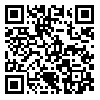Volume 75, Issue 10 (January 2018)
Tehran Univ Med J 2018, 75(10): 708-714 |
Back to browse issues page
Download citation:
BibTeX | RIS | EndNote | Medlars | ProCite | Reference Manager | RefWorks
Send citation to:



BibTeX | RIS | EndNote | Medlars | ProCite | Reference Manager | RefWorks
Send citation to:
Mansury D, Ghavidel M, Ghazvini K. Latent tuberculosis infection in health care workers: review article. Tehran Univ Med J 2018; 75 (10) :708-714
URL: http://tumj.tums.ac.ir/article-1-8466-en.html
URL: http://tumj.tums.ac.ir/article-1-8466-en.html
1- Antimicrobial Resistance Research Center, Buali Research Institute, Mashhad University of Medical Sciences, Mashhad, Iran. Student Research Committee, Mashhad University of Medical Sciences, Mashhad, Iran.
2- Antimicrobial Resistance Research Center, Buali Research Institute, Mashhad University of Medical Sciences, Mashhad, Iran. Department of Microbiology and Virology, Faculty of Medicine, Mashhad University of Medical Sciences, Mashhad, Iran.
3- Antimicrobial Resistance Research Center, Buali Research Institute, Mashhad University of Medical Sciences, Mashhad, Iran. Department of Microbiology and Virology, Faculty of Medicine, Mashhad University of Medical Sciences, Mashhad, Iran. ,Ghazvinik@mums.ac.ir
2- Antimicrobial Resistance Research Center, Buali Research Institute, Mashhad University of Medical Sciences, Mashhad, Iran. Department of Microbiology and Virology, Faculty of Medicine, Mashhad University of Medical Sciences, Mashhad, Iran.
3- Antimicrobial Resistance Research Center, Buali Research Institute, Mashhad University of Medical Sciences, Mashhad, Iran. Department of Microbiology and Virology, Faculty of Medicine, Mashhad University of Medical Sciences, Mashhad, Iran. ,
Abstract: (5771 Views)
The members of Mycobacterium tuberculosis complex (MTBC) known as causative agents of human tuberculosis. Tuberculosis infection is one of the most important occupational risks for healthcare workers (HCWs) in most countries, such as Iran. In general, there are two types of tuberculosis, they include: latent infection and active TB. Latent tuberculosis infection (LTBI) means: a patient is infected with Mycobacterium tuberculosis but, the patient does not have active tuberculosis, clinical symptoms and radiological findings. According to studies, TB infection from patients to health care workers, depending on geographic region and economic situation is two to five times more than general population. The lowest incidence and the highest rates of LTBI prevalence among HCWs were 7% in Mashhad and 82.8% in Zahedan respectively. The risk factor acquisition of TB infection was a significant relationship with certain hospital wards (lung disease unit, laboratory, etc.), Increasing age and duration of employment. And results of this study show that TB is a significant problem among HCWs in Iran. Infection control and personal protective measures with training programs to patients and HCW is required to reduce the occupational risk of TB. Early detection of Mycobacterium tuberculosis and prevention treatment in people with latent TB are key elements in control of tuberculosis. Until now, different methods for detection of latent tuberculosis infection has been introduced that are not gold standard none of them. However, the most important methods, tuberculin skin test and the tests that based on measuring the production of interferon gamma are recommended, but each one of them has advantages and disadvantages. However, in all the articles of the tuberculin skin test is used for screening and early diagnosis of latent tuberculosis infection. So, the aim of this study was to Incidence and prevalence of latent tuberculosis infection in health care workers and risk factors, advantages and disadvantages of each method for diagnosis of latent tuberculosis infection and evaluate different strategies for reducing the incidence of latent tuberculosis infection in health care workers.
Type of Study: Review Article |
Send email to the article author
| Rights and permissions | |
 |
This work is licensed under a Creative Commons Attribution-NonCommercial 4.0 International License. |





